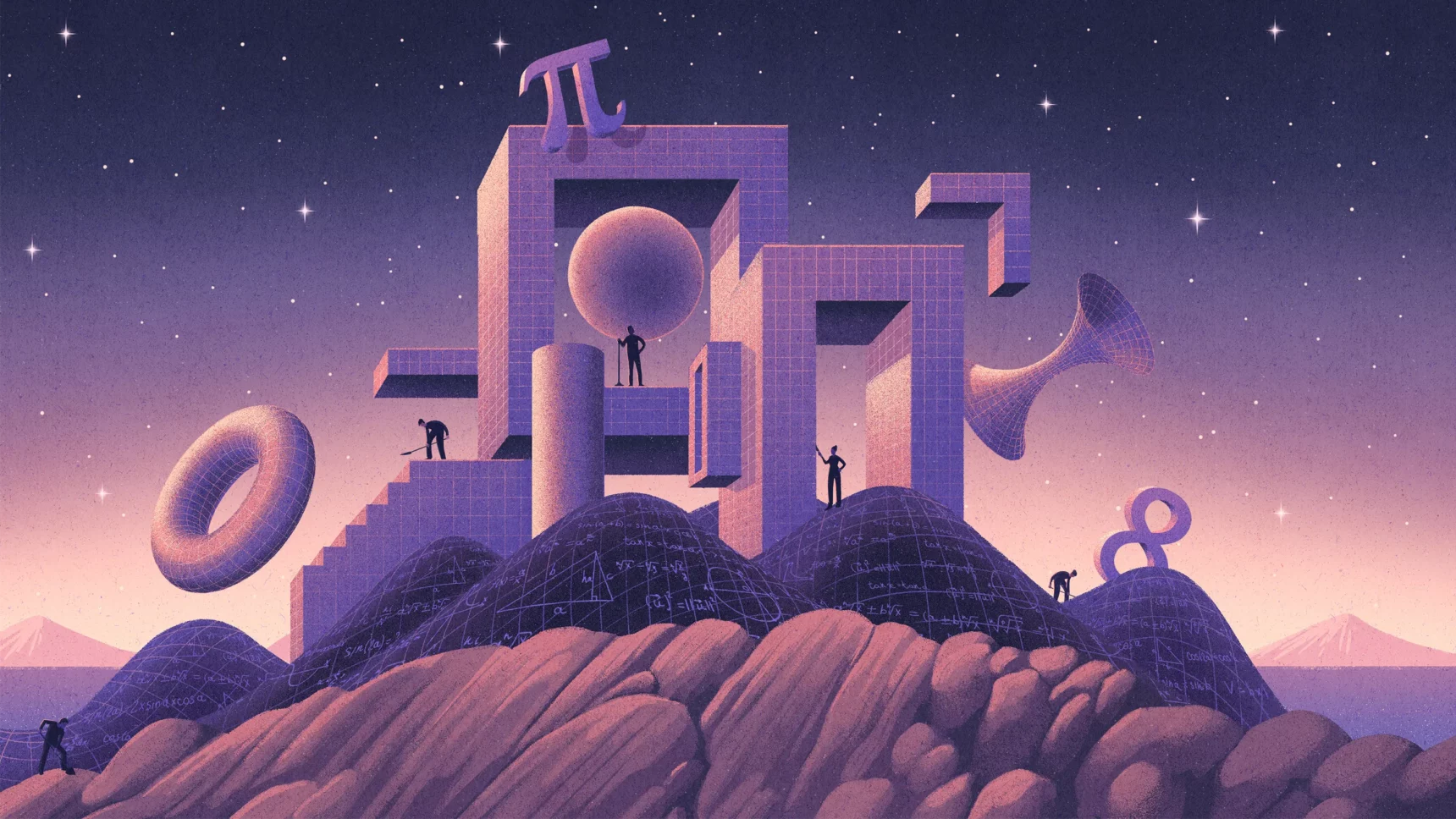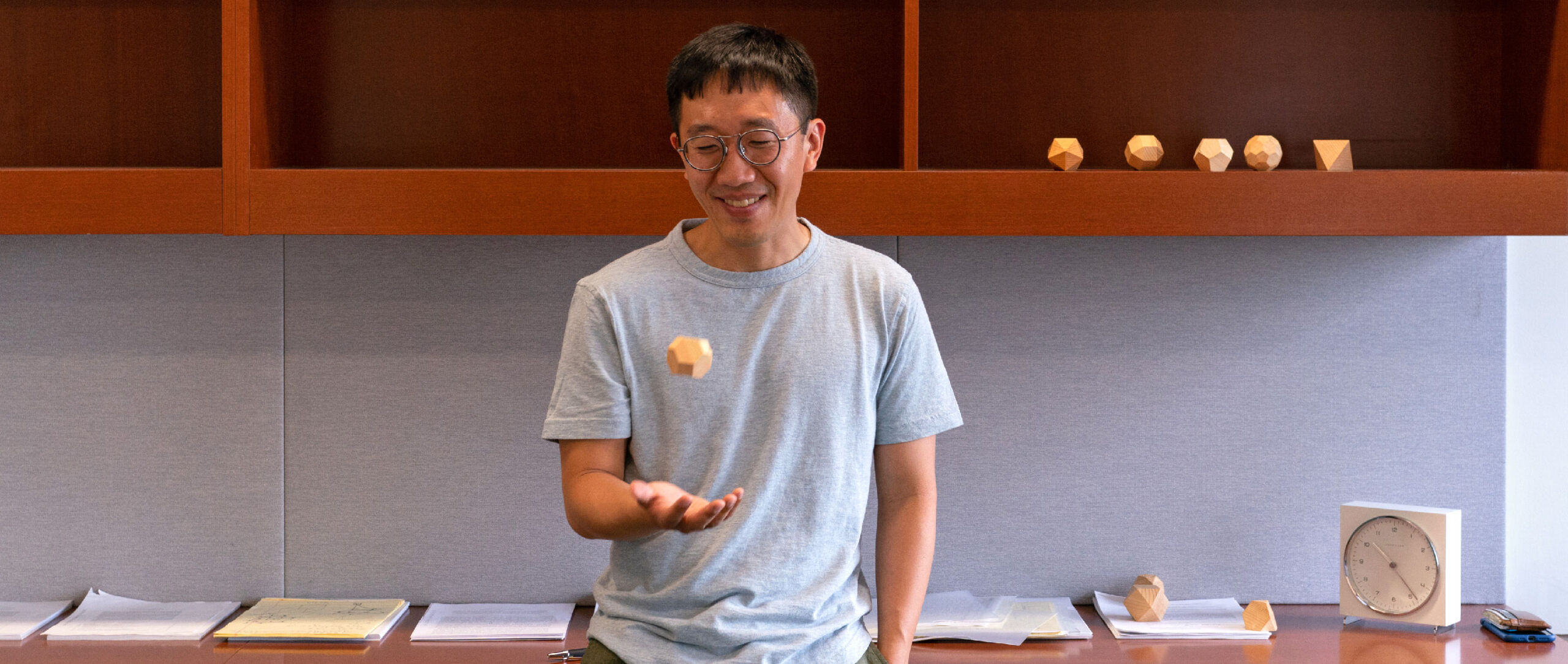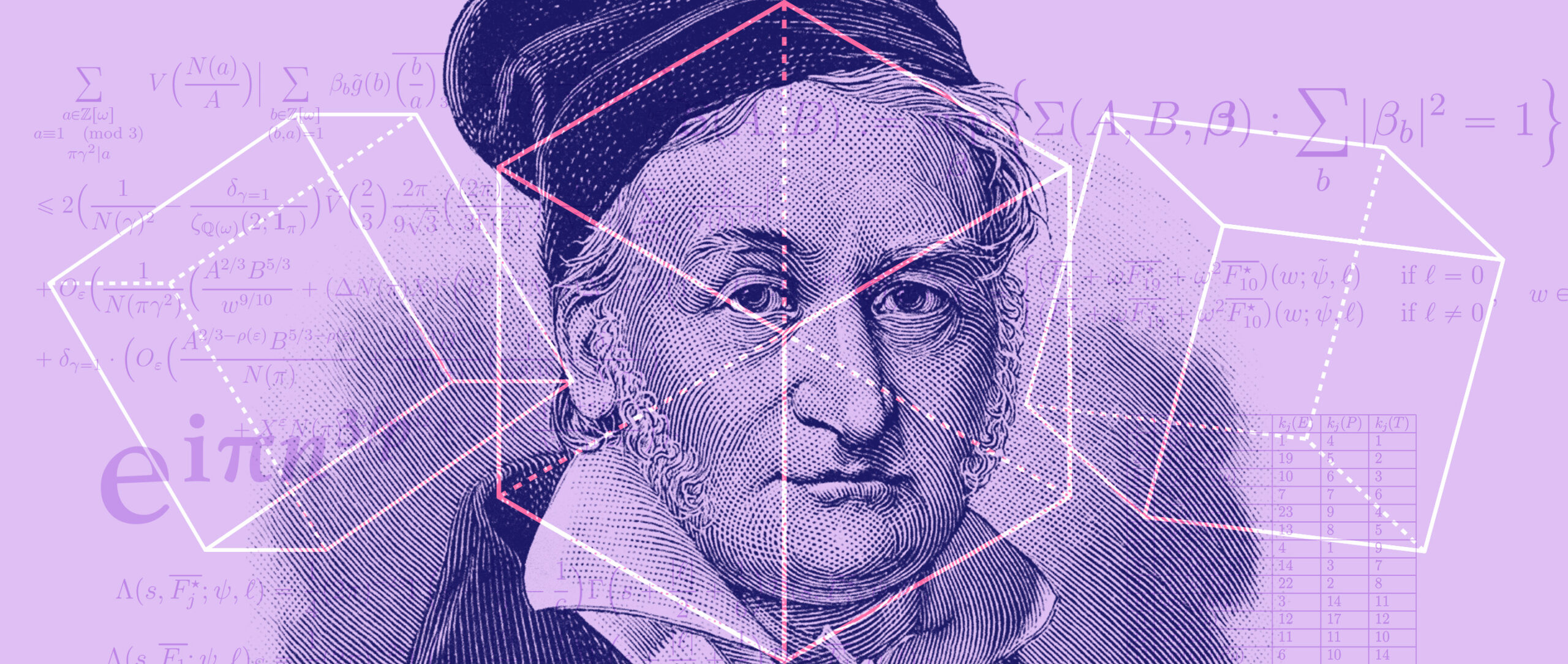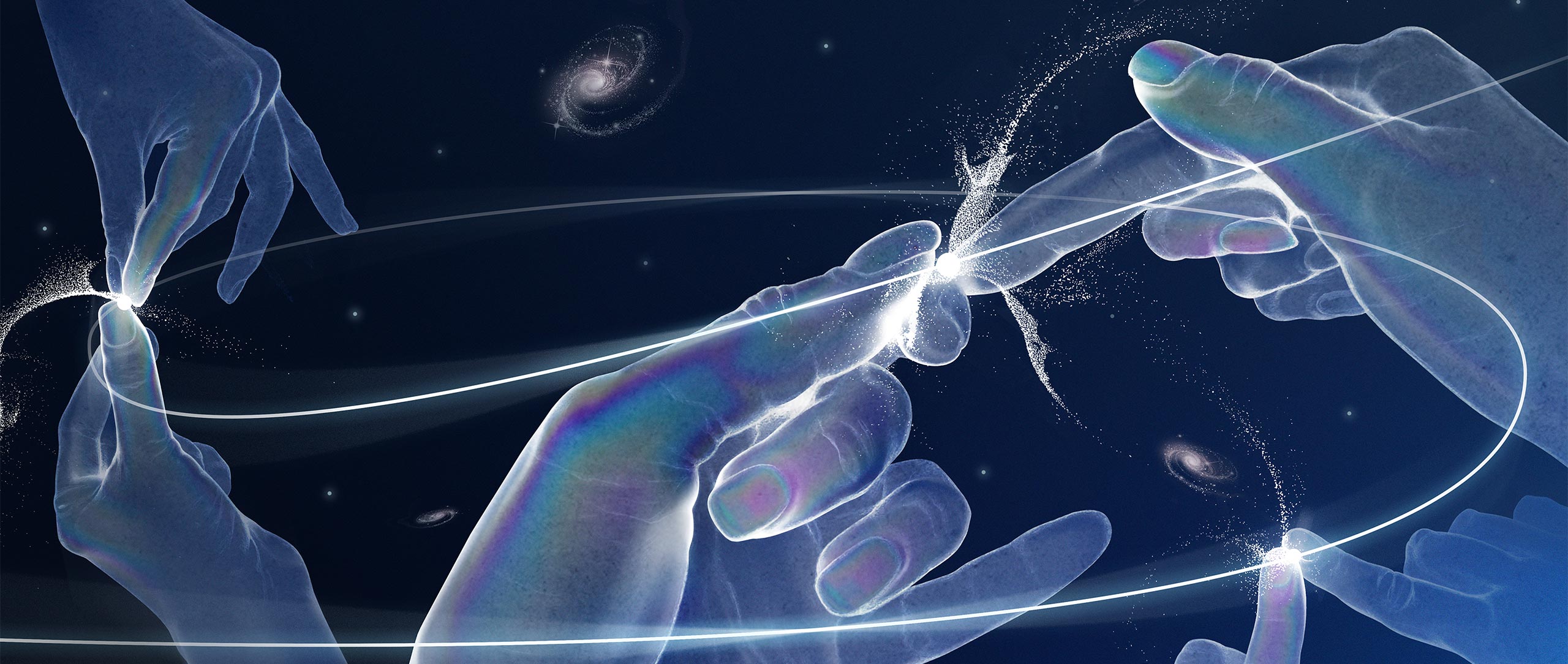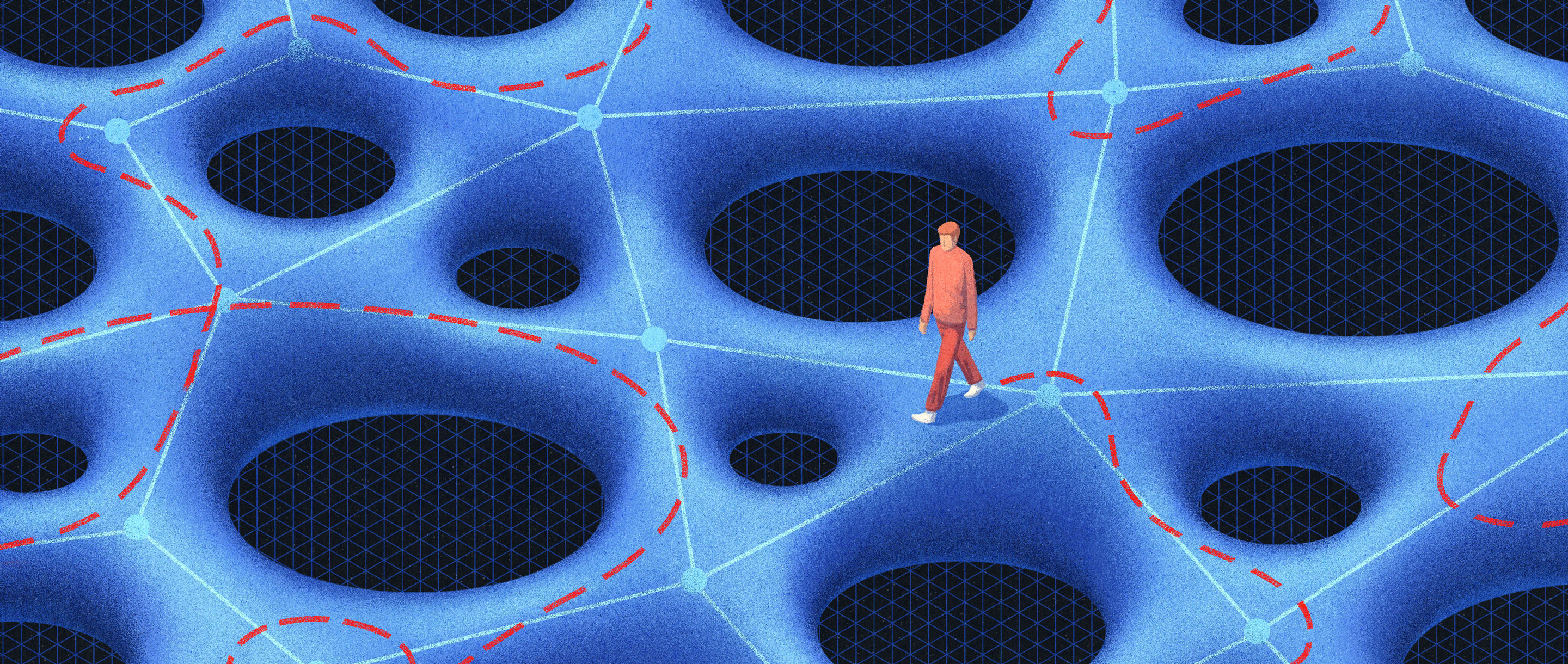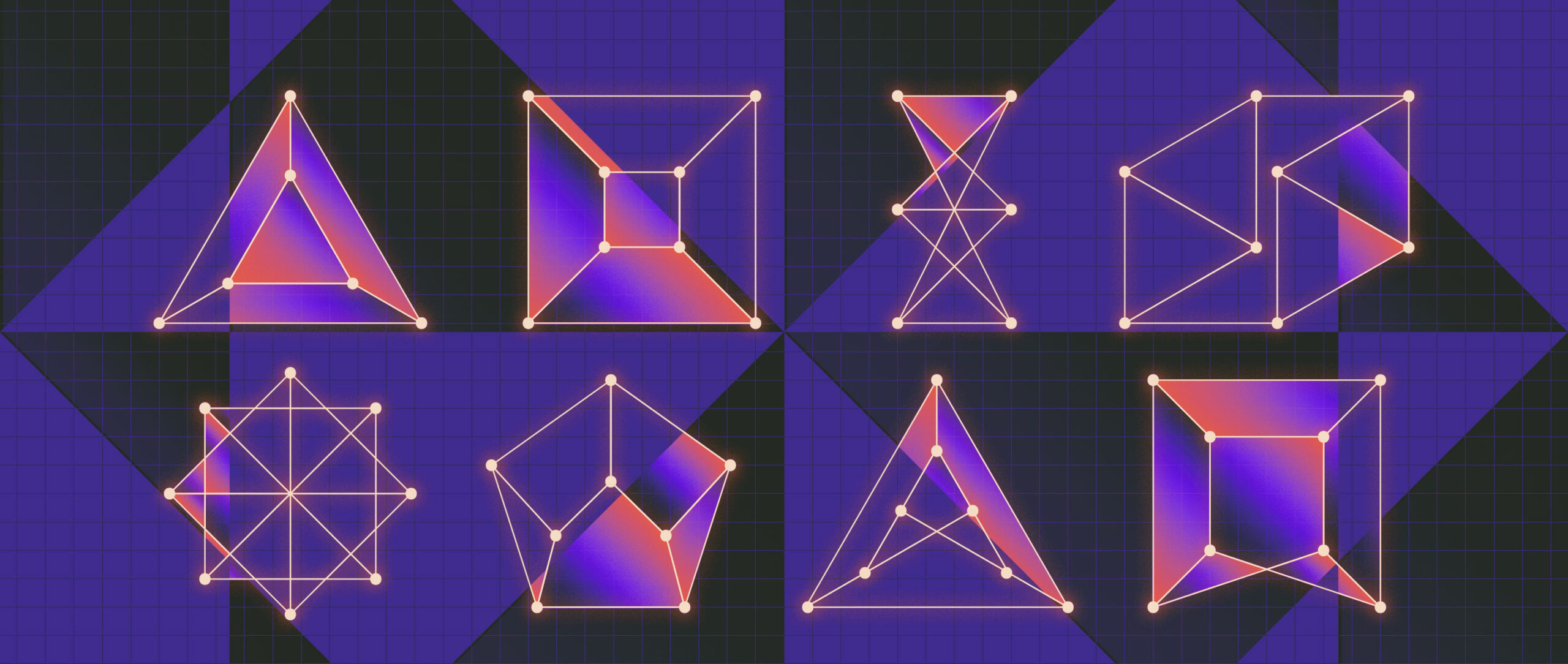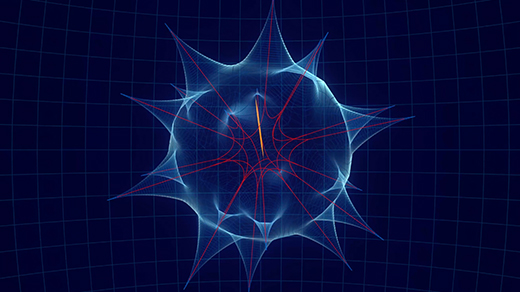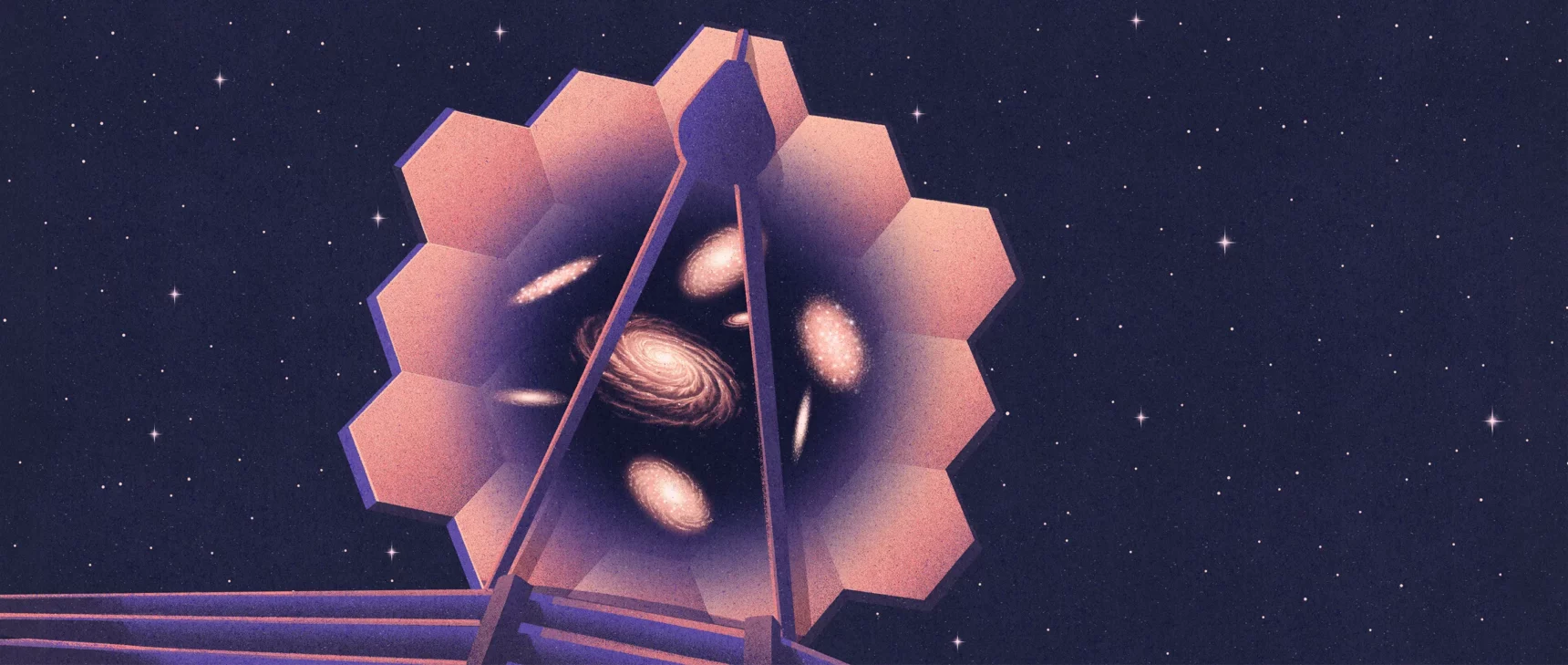Introduction
We can think of a mathematician as a kind of archaeologist, painstakingly brushing dust off the hidden structures of the world. But the structures mathematicians reveal are not only durable, but also inevitable. They could never have been any other way. They are also remarkably interconnected: Though each year the mathematical frontier continues to expand as new discoveries are made, the sprawl of subdisciplines also shrinks a little as connections are found between seemingly far-flung domains.
It can be difficult to convey to the nonexpert just how shocking some of these connections are. In 2022, as always, we’ve done our best.
It was a year of short papers — a six-page proof that pinpointed when structure emerges in random graphs — and long ones — a 912-page paper showing that slowly rotating black holes are going to keep on slowly rotating until the end of time.
Some mathematical results can be impenetrable not only to the public but also to other mathematicians. Quanta spoke to Lillian Pierce, a number theorist at Duke University, about her work to make important proofs and techniques understandable to a broader range of mathematicians, and to Wei Ho, who discovered new bounds on the number of integer solutions to equations called elliptic curves.
Alex Kontorovich, in a video and accompanying column, discussed the sweeping Langlands program that has been making connections across disparate fields of mathematics.
Though many of these results have no immediate practical applications, it’s tough to know what abstract result will end up becoming crucial to coming up with new, secure cryptographic ciphers or updating the error-correcting codes needed to make modern communications work.
One thing that is clear from the past year of math coverage in Quanta is that there is no one path to becoming the type of mathematician who can uncover a fundamental truth that nobody else could. Some are singularly focused on mathematics from a young age; others come to it later in life. Some satisfy a stereotype of absent-minded brilliance; others don’t.
As Huh put it, when it comes to how the human mind makes leaps of mathematical reasoning, “it’s nice to admit that we don’t know what’s going on.”
Caroline Gutman for Quanta Magazine
Award-Winning Mathematics
Every four years, the International Mathematical Union awards a gold coin with the head of Archimedes engraved on it to up to four mathematicians younger than 40 “to recognize outstanding mathematical achievement for existing work and for the promise of future achievement.” This year the Fields Medal went to June Huh, James Maynard, Maryna Viazovska and Hugo Duminil-Copin.
In a profile, Huh explained that “mathematics could give him what poetry could not: the ability to search for beauty outside himself, to try to grasp something external, objective and true.” The prize recognized his proof of a number of different conjectures. Among other things, he found a deep geometric structure “lurking beneath combinatorial properties of graphs” when he proved something known as Read’s conjecture.
Maynard’s award was for his discoveries in analytic number theory. Not long after he finished graduate school, he proved that there are an infinite number of prime pairs that differ by 600 or less. This was a landmark result, but it would have been even more significant if another mathematician had not proved the existence of a finite bound on the gaps between prime pairs a few months earlier. It was a remarkable example of parallel progress on a problem related to questions about the distribution of prime numbers. But Maynard added to his work on prime gaps by proving that there are an infinite number of primes that don’t contain a given digit, like 7.
It’s long been known that the densest way to pack circles in a plane is in a honeycomb, and a decade ago a conjecture that had stood since the 17th century about how to most efficiently pack spheres in three dimensions was proved. But higher dimensions are mostly a mystery. Viazovska proved that a particular eight-dimensional lattice provides the most efficient way to pack spheres in eight dimensions. She and collaborators then generalized that result to prove that this lattice minimizes the energy of a system in a wide variety of contexts.
Duminil-Copin, the fourth medalist, won for coming up with a generalized theory of how liquids flow through porous media.
The Fields Medals weren’t the only prizes awarded this year. Dennis Sullivan won the Abel Prize for his contributions to topology, which included coming up with a new way to classify certain types of manifolds — spaces that look flat on a small scale but are more complicated when examined in their entirety.
And for achieving a better understanding of so-called quasi-periodic operators, which are used to model electron behavior, Svetlana Jitomirskaya was awarded the first Ladyzhenskaya Prize in Mathematical Physics.
Kristina Armitage for Quanta Magazine
New Proofs of Old Number Theory Problems
It was a bumper year for number theorists of all ages, following a productive 2021. A high school student, Daniel Larsen, found a bound on the gaps between pseudoprimes called Carmichael numbers, like 561, which resemble primes in a certain mathematical sense but can be factored (in this case 561 = 3 × 11 × 17).
Jared Lichtman, a graduate student at the University of Oxford, showed that actual primes are, according to a certain measure, the largest example of something called a primitive set.
Two mathematicians at the California Institute of Technology proved a 1978 conjecture predicting that cubic Gauss sums, which sum numbers of the form $latex e^{\frac{2iπn^3}{p}}$ for some prime number p, always add up to about $latex p^{5/6}$. Their proof assumed the truth of something called the generalized Riemann hypothesis, which mathematicians widely believe to be true but have not yet proved. Meanwhile a simpler analogue of the Riemann hypothesis called the subconvexity problem was solved.
A pair of mathematicians showed that whether an integer has an even or odd number of prime factors has no effect on whether the integer before or after it has an even or odd number.
Another group showed that at least 2/21 and no more than 5/6 of integers can be written as the sum of two cubed fractions.
In 1993, a mathematician named Peter Stevenhagen conjectured that the equation $latex x^2-dy^2=-1$ has an integer solution about 58% of the time under certain constraints on d. This year, his hypothesis was proved.
It was one of several long-standing conjectures that were shown to be true. The 30-year-old André-Oort conjecture about the structure of something called Shimura varieties was finally proved, as was the 85-year-old Van der Waerden conjecture, which estimates how many polynomials have noninterchangeable roots.
In the 1970s Paul Erdős and Ronald Graham posited that sufficiently large sets of integers must contain subsets whose reciprocals sum to 1, which was proved this year. It was also shown that such large sets of integers must contain something called an infinite sumset; this was proved using methods from the study of dynamical systems.
Machines Learning Math
Deep learning, the widely used AI technique that has beaten champions at games like chess and Go and proved extremely accurate at tasks like speech recognition, is also being deployed in some areas of math. Researchers used it to search for unusual singularities, points of breakdown in equations that model the flow of fluids. A separate team used computer-assisted proofs to definitively prove that a particular version of the Euler equations, which model certain types of ideal fluids, breaks down. Yet another group poked at the related Navier-Stokes equations, which more accurately model most real-world fluids, to see if they too might fail. (Anyone who shows that they do stands to win a million-dollar prize from the Clay Mathematics Institute.)
Several other groups used machine learning to solve problems in graph theory and combinatorics, create better techniques for multiplying matrices, and come up with new conjectures in knot theory. Sébastien Bubeck and Mark Sellke turned the tables by using mathematical techniques for analyzing neural networks to prove how big they must be to work robustly.
In episodes of Quanta’s Joy of Why podcast, Steve Strogatz asked Kevin Buzzard if computers can be mathematicians and spoke with Melanie Matchett Wood about what it takes for mathematicians to truly believe a result has been proved.
Nadzeya Makeyeva for Quanta Magazine
Bubbles, Shapes and Spaces
Not to be left behind, geometers also had a busy year. In May, Emanuel Milman and Joe Neenan found out the shape of clusters of bubbles that can most efficiently enclose three or four volumes — in any number of dimensions.
Isabel Vogt and Eric Larson solved the interpolation problem, a long-standing question about how many random points in high-dimensional space certain types of curves can pass through.
Andras Máthé, Oleg Pikhurko and Jonathan Noel solved an even older problem, figuring out how a circle can be cut up into visualizable pieces that can be rearranged into a square. (A Quantized Academy column explains the simpler process of figuring out whether two polygons have equal area.)
Martin and Erik Demaine (father and son) published a paper that shows how to take any polyhedron and fold it into a flat shape — as long as you allow infinitely many creases. (A Quantized Academy column explained how tetrahedra — pyramids — have much more intricate relationships between their interior angles than do triangles, their two-dimensional analogue.) In August, a collaboration of mathematicians and physicists published a paper that laid out a new theory of how the curvature of thin materials affects the wrinkles that are formed when they are flattened.
Dusa McDuff and several collaborators found intricate fractal structures emerging when they tried to embed shapes called ellipsoids into something called Hirzebruch surfaces — a place where nobody had expected to find fractals.
Other mathematicians made progress toward proving the Kakeya conjecture, which puts limits on how big a space is needed to turn a needle around so that it can point in any direction — but there are doubts as to whether the conjecture is in fact true in the domain of real numbers.
Myriam Wares for Quanta Magazine
Adventures in Topology
This year, Quanta covered the work of Will Hide and Michael Magee, who in 2021 used techniques borrowed from graph theory to show the existence of types of high-genus surfaces that are deeply interconnected with themselves in a way that had long been thought, but not proved, to be possible.
Ian Agol proved a 1981 conjecture about how to rank the complexity of knots.
Knots in two dimensions can be used to delineate the boundaries of something called a Seifert surface. Many pairs of Seifert surfaces that are distinct from each other even if the knots are manipulated in three-dimensional space can be made equivalent if the knots are manipulated in a fourth dimension. Topologists found, for the first time, a pair of Seifert surfaces that remained distinct from each other even in four dimensions. A column explained knot theory’s origins, and Colin Adams and Lisa Piccirillo told Steven Strogatz about their fascination with knots on an episode of the Joy of Why podcast.
Kristina Armitage for Quanta Magazine
The Emergence of Random Structure
A remarkably short proof published in March proved the Kahn-Kalai conjecture, which laid out conditions under which structure emerges in random graphs. This followed a proof in January that it’s always possible to build a “hypergraph” — a sort of highly connected generalization of a graph — in a way that satisfies two seemingly incompatible criteria, as long as you make the hypergraph big enough.
New graph theory results kept coming. In April, Oliver Janzer and Benny Sudakov answered a half-century-old question about when graphs must inevitably become “regular,” or interconnected in such a way that every node is connected to the same number of edges. And a column gave an introduction to graph theory through an ice-breaking party game.
Correction: December 23, 2022
An earlier version of this article misstated Stevenhagen’s conjecture. The description has been amended.
